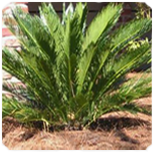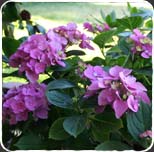
Maples are a type of deciduous tree. Their flowers stand upright and are self-pollinating. They propagate by seeds, which have wings that allow them to fall toward the ground like a helicopter.
Most maples grow in zones 3 to 8, but a few can only be grown in specific zones. Be sure to check before purchasing your tree.
Care Sheet
Besides the proper climate, one of the most important care tips to remember when growing a maple tree is the soil. The type of soil determines how much nutrients and water a plant has access to. It also determines if your maple can withstand environmental stresses such as growing in an urban environment or defending itself against diseases such as verticillium wilt.
When a maple is planted into an environment, the soil is usually not ideal. Before planting a maple it is your job to prepare the soil. To help improve your soil, it is best to add mycorrhizal fungi. These beneficial fungi live in and around the roots of plants. The mycorrhizal fungi will absorb and pass on minerals and moisture required for growth in exchange for sugars and simple carbohydrates.
In nature, mycorrhizal fungi can be found in about 99 percent of plant species. Most urban environments often lack this important element.
Pests and Diseases
Maple trees found in the United States and Canada are threatened by the Asian Longhorned Beetle. If an infestation occurs it can spread, resulting in the destruction any neighboring Maple trees. Thousands of maple trees and others have been destroyed by Longhorned Beetles in Illinois, Massachusetts, New Jersey and New York.
Maple tree can also be affected by fungal diseases such as Verticillium wilt, which is caused by one of three species of Verticillium genus. In laymen’s terms, a fungus is growing on your tree. The most common symptom is wilting. Wilting occurs because this fungal disease causes a reduction or water and nutrient flow to the plant.
Uses of Maple Trees
You can use Maple trees for many purposes. The wood itself can be made into a high quality charcoal but is usually used for fine furniture due to it’s sturdy fine-grained nature. These trees also have sap that can be made into sugar. The sugar is the only ingredient in maple syrup.
Types of Maple Trees

128 species of maple trees. Most are native to Asia but a number of Mable trees can also be found in Europe, northern Africa and North American.
Some of the most common types of maples found in landscaping include:
- Japanese maple (Acer palmatum)
- Norway maple (Acer platonoides)
- Sugar maple (Acer saccharum)
- Paperbark maple (Acer griseum)
- Red maple (Acer rubrum)
- Silver maple (Acer saccharinum)








